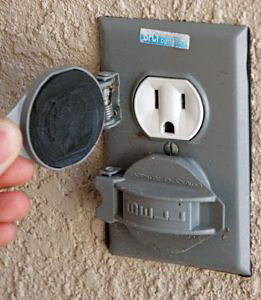How Important Is GFCI Outlets Installed in Your Home
Posted on: October 28, 2016
By: Alan O'Neill
Posted in: Electrician
 Why GFCI Installation in Houston is So Important for Electrical Safety
Why GFCI Installation in Houston is So Important for Electrical Safety
A ground-fault circuit interrupter (GFCI) outlet is an important device for electrical safety in your home. Where circuit breakers are designed to protect the electrical system from damage when there’s a surge, a GFCI outlet is designed to protect people from high voltage shocks. The National Electrical code requires the use of ground fault circuit interrupter, or GFCI, outlets anywhere outside of the home.
GFCI installation is crucial part of electrical safety. It’s one electrical upgrade you simply can’t afford to skip! We need to emphasize professional repairs: do not tamper with any part of your electrical system on your own. You risk dangerous high voltage shocks, as well as causing further damage to the electrical system.
GFCIs are commonly found in bathrooms, bedrooms, laundry rooms, kitchens, garages, and outdoors on patios, porches, and pool areas. The more GFCIs your home has, the safer it is!
How GFCI Receptacles Keep You Safe
Two-thirds of all electrocutions in U.S. homes could be prevented if people installed the receptacles.
Portable
A ground fault happens whenever electricity escapes the confines of the wiring in an appliance, light fixture, or power tool and takes a shortcut to the ground. When that short cut is through a human, the results can be deadly. About 200 people in the U.S. alone die of ground faults each year, accounting for two-thirds of all electrocutions occurring in homes.
To prevent such accidents, Charles Dalziel, a professor of electrical engineering at the University of California, invented the ground-fault circuit interrupter (GFCI), in 1961. Most of the time, his invention does nothing; it just monitors the difference in the current flowing into and out of a tool or appliance. But when that difference exceeds 5 milliamps, an indication that a ground fault may be occurring, the GFCI shuts off the flow in an instant — as little as .025 second.
GFCIs are required by the National Electric Code in all new kitchens, bathrooms, crawl spaces, unfinished basements, and most outdoor receptacles. Owners of older houses can retrofit $10 GFCI receptacles at those locations or have GFCI breaker switches (which run as much as $108 for 50-amp models) mounted in the main breaker panel. Portable GFCI adapters, which plug into regular wall receptacles, are available for about $40.
“The great thing about GFCIs is that they protect you whether or not your wiring is grounded,” says Bill Grande, manager for safety products at Leviton, a manufacturer of GFCIs. Because lightning and other power surges can damage a GFCIs delicate circuitry at any time, Grande recommends the following monthly test: Plug in a light fixture and turn it on. Then push the device’s test button. If the light stays on, the GFCI needs to be replaced.
Call professional electricians for new outlet installation
This is important: you can’t go to a hardware store, purchase GFCI outlets, and then install them on your own. This is potentially dangerous work for anyone who isn’t a licensed electrician—and avoiding electrical shocks is what these outlets are all about in the first place! Contact our skilled electricians and they’ll be glad to help you with the necessary work. Need new outlets installed? You’ve come to the right place. Call (713) 812-7070 on the expert electricians at Abacus Plumbing today to find out how we can help!
For more related articles and info visit Blog.
